Submitted by WA Contents
Wood Marsh built sculptural Towers Road House that features disc-shaped zinc roof in Toorak
Australia Architecture News - Jun 01, 2020 - 12:06 5743 views
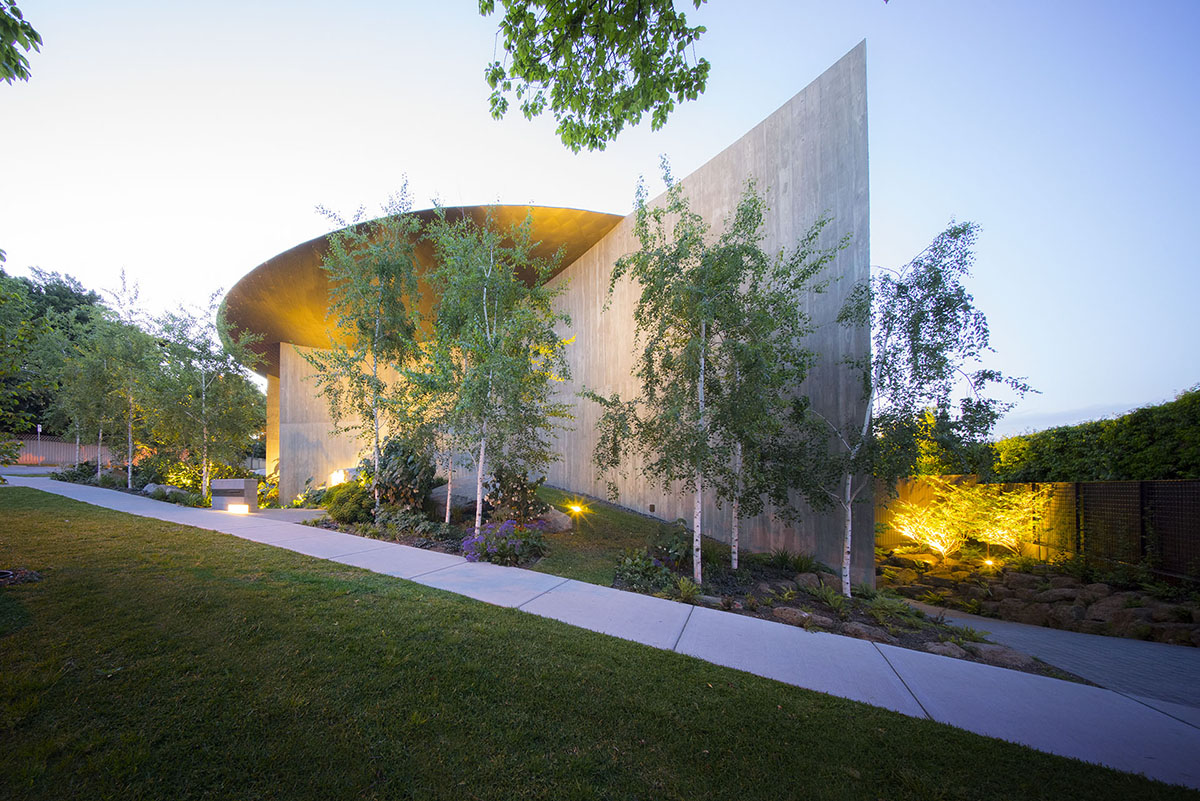
Australian architecture studio Wood Marsh has built a sculptural private residence that features high arc-shaped concrete walls and are placed under a disc-shaped zinc roof in the Melbourne suburb of Toorak.
Named Towers Road House, the house was conceived "as a sculpture to live within", an unusual house represents a shared belief between clients and architects that contemporary art enriches life in a profound and meaningful way, according to the firm.
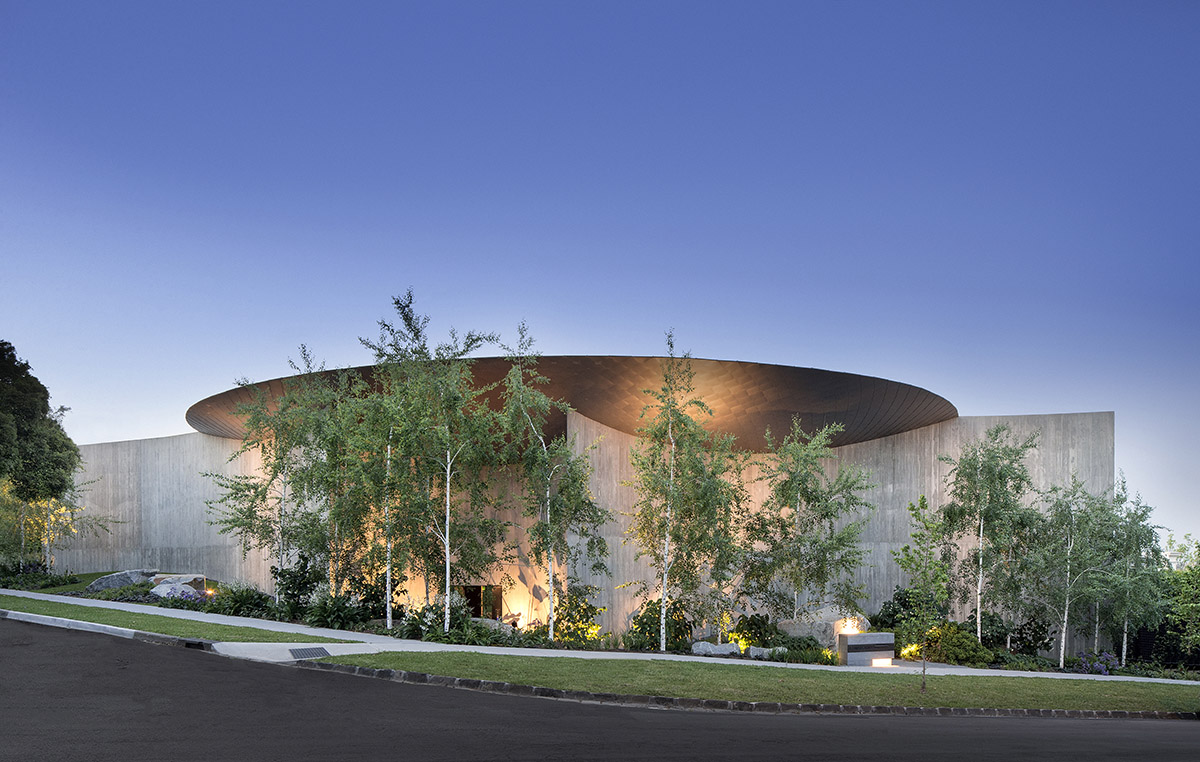
The architects take cues from the late Bulgarian artist Christo’s Running Fence, introducing a public interface with conceptual art to the established suburb of Toorak.
As the architects highlight, the house challenges standard notions of domesticity, and it is described as the abstract form of the building curves around the sloping site.

"Like a curtain, the substantial concrete wall carves out a series of landscaped arcs eliminating the archetypal boundary fence, extending the garden to the street and blurring the demarcation between public and private space," said Wood Marsh.
"Simultaneously, this gesture generates a secluded private realm and the opportunity to open all living and bedroom spaces onto a northern garden."

The studio designed a large a disc-shaped roof on the top of the building that is perceived as a horizontal line and finished with a three-dimensional hemisphere draped to gently penetrate the seemingly impenetrable mass below.

The giant roof is clad in zinc, the form references an inverted roof or dome, further transforming architectural conventions into sculptural elements.
Eliminating fenestration to the street, the site is entered from a winding path through monumental concrete walls and informal gardens encircling a spherical portico set below street level.

The wall is punctuated by a single door that leads one through a dramatic double-height corridor. The dark, narrow passage creates a moment’s pause in the arrival sequence as the impressive verticality of the gently curving raw concrete formwork reveals itself internally.
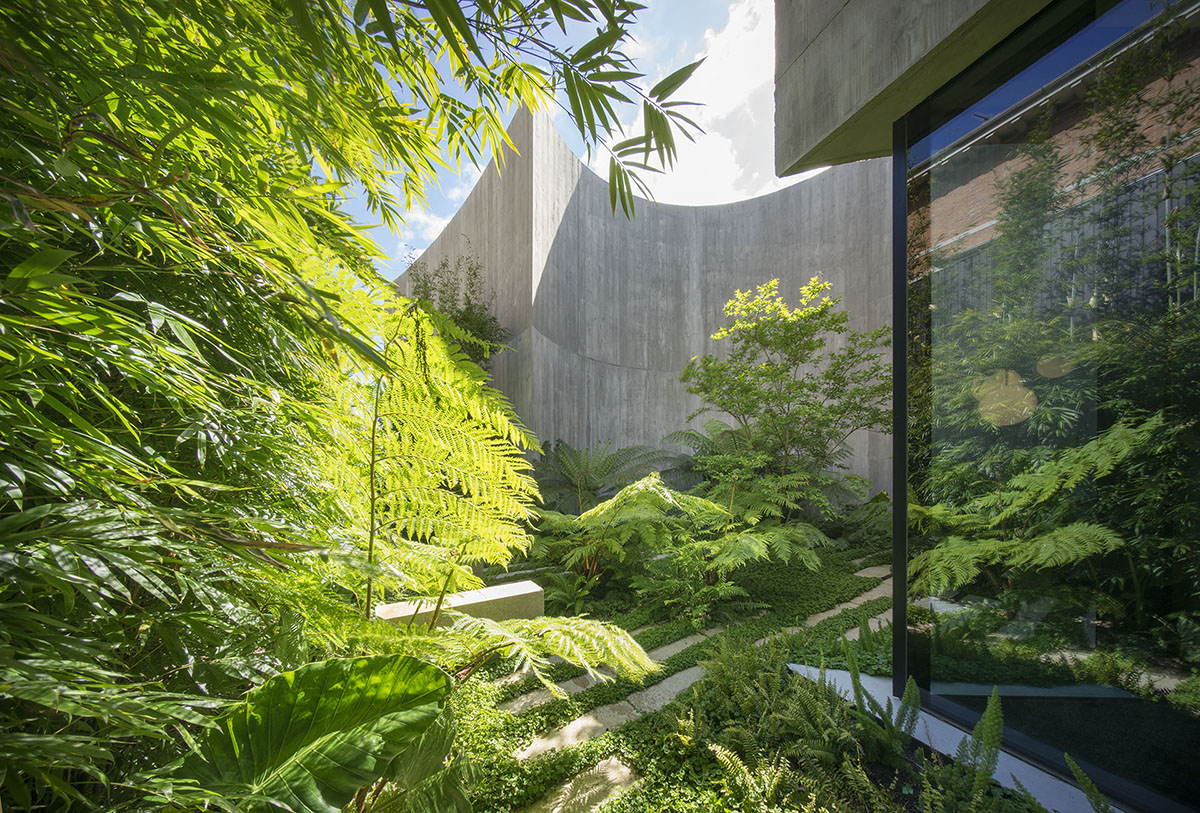
In absolute contrast to the austerity of the perimeter structure, the building opens to a fully glazed northern façade, filling the interior with an abundance of natural light and embracing the landscaped garden and views to a 150-year-old plane tree.
The architects responded to the client brief as much as possible, the program is separated by levels creating flexible, inviting living spaces with integrated art galleries on the ground level.
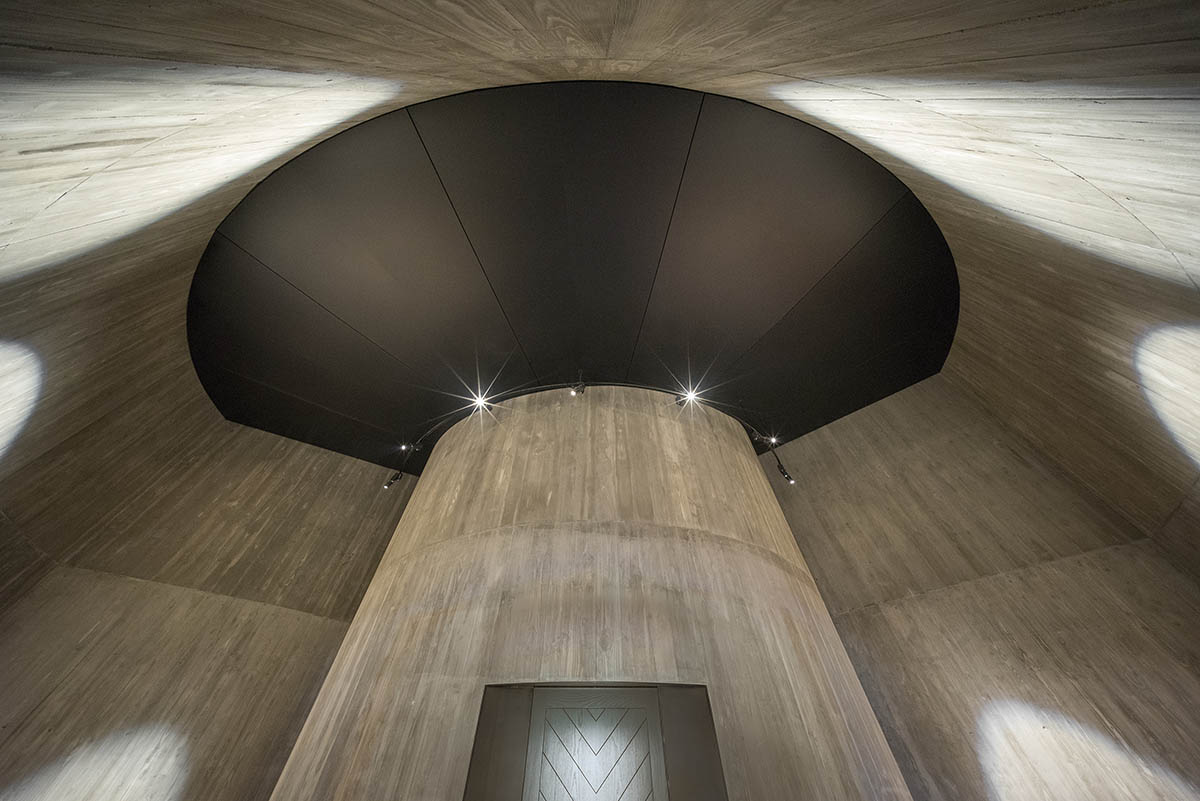
The circular sunken lounge is designed to pay homage to the familial central gathering space around a fireplace. Accessible by a curving dual staircase wrapping around an exposed concrete wall, the private spaces are located upstairs, divided into separate wings for the parents and the children. Additional spaces to accommodate an art gallery, wine cellar and car parking are located in the basement level.
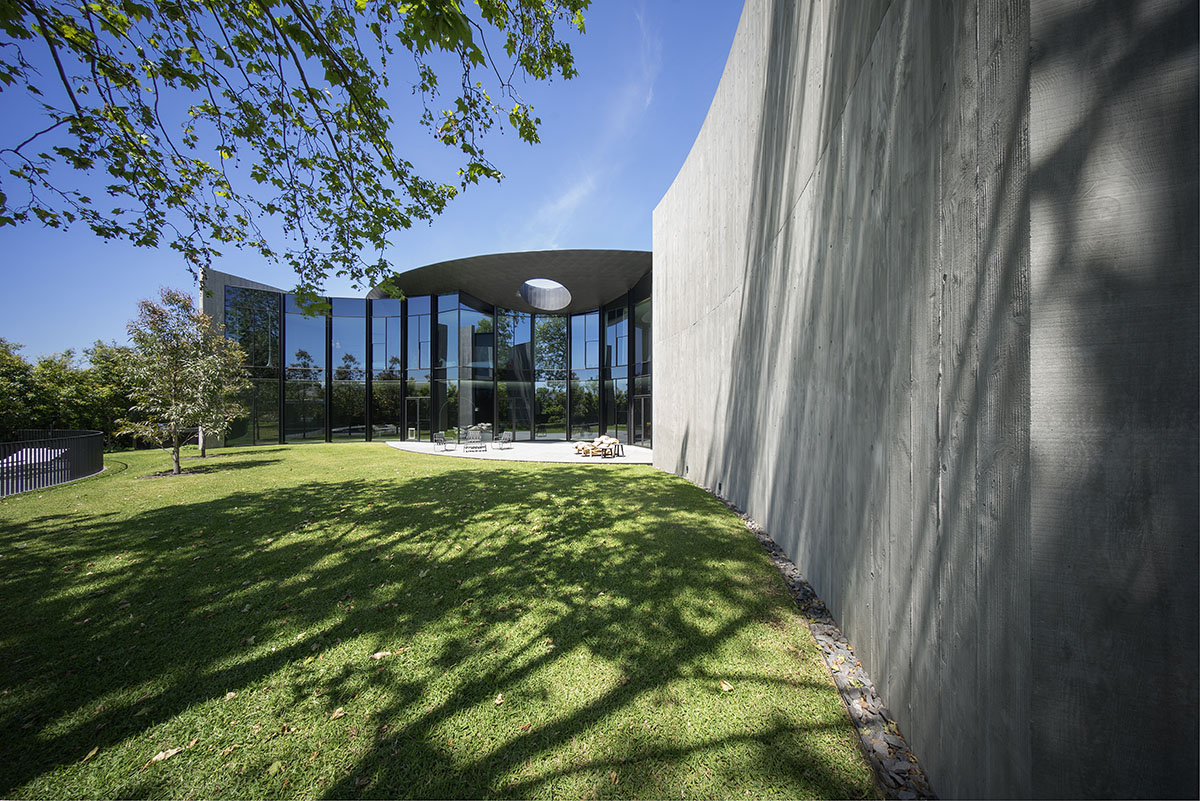
A large private outdoor space beneath the plane tree canopy sits adjacent a swimming pool and pool house, shielded from view by the heavily planted boundary.
Small pockets of gardens are planted in the niches formed by the concave external walls allowing verdant views without compromising privacy.

Image © Peter Bennetts
Sculptural, the building’s contemporary language stands it in contrast to its conventional neighbours, satisfying the clients' desire for a bold and unexpected home embodying their commitment to contemporary Australian art and architecture.

Image © Peter Bennetts

Image © Peter Bennetts
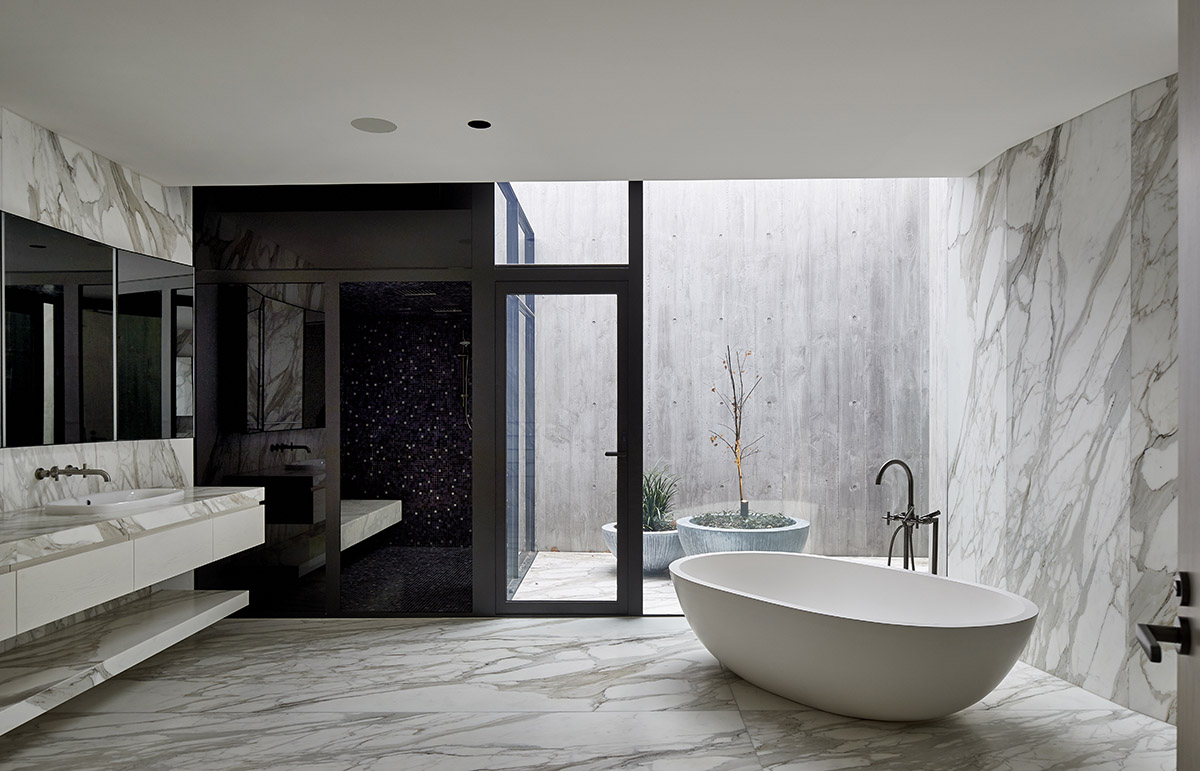
Image © Peter Bennetts

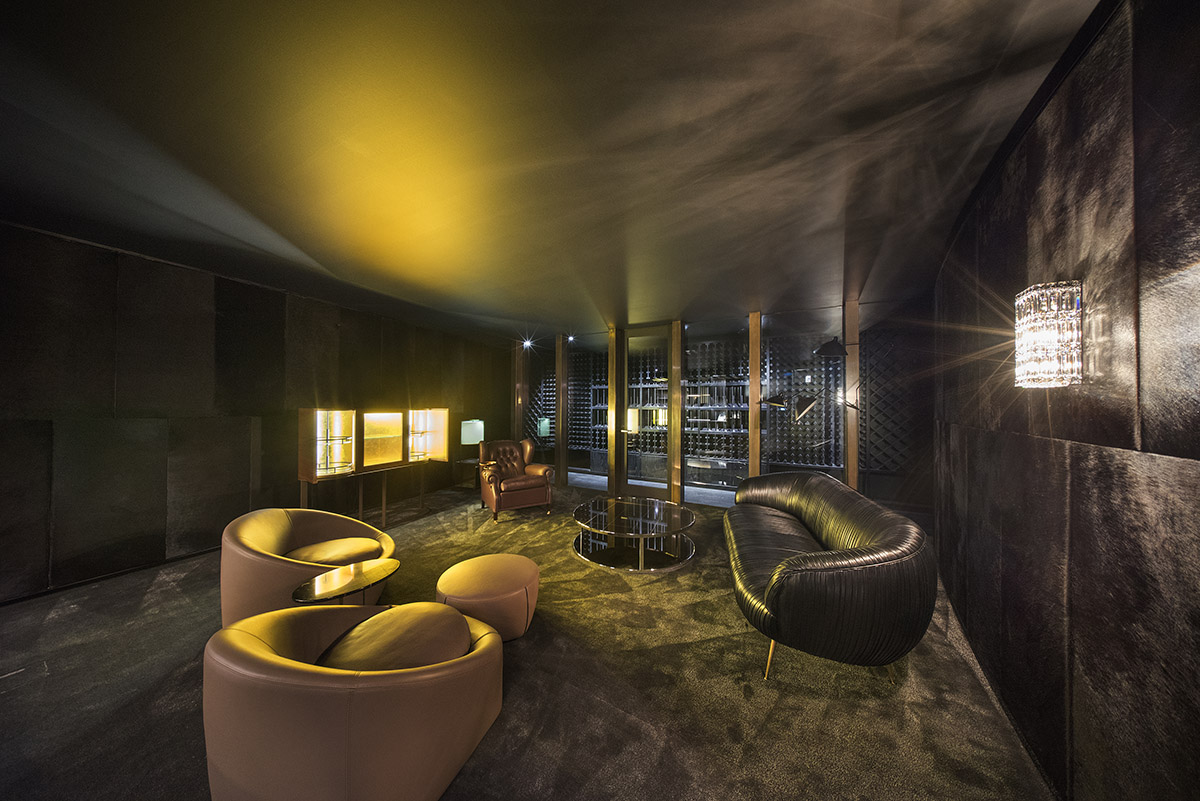

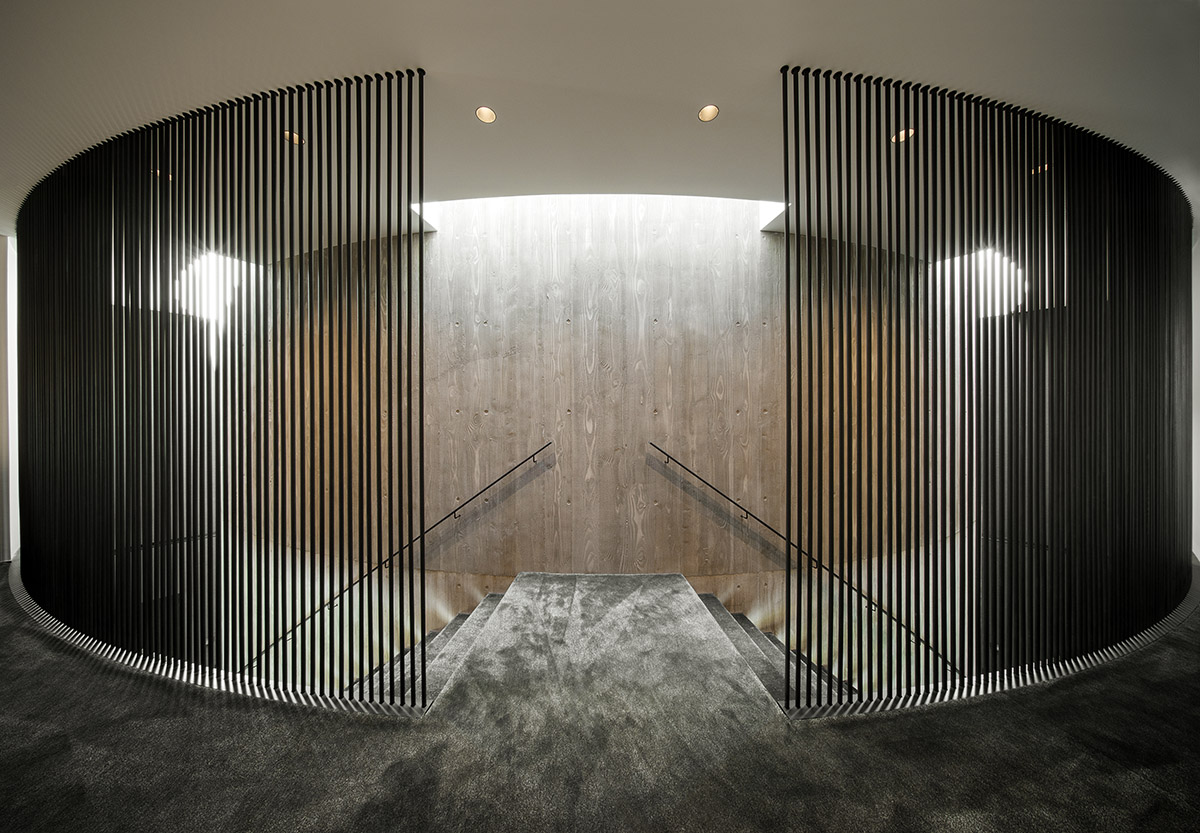
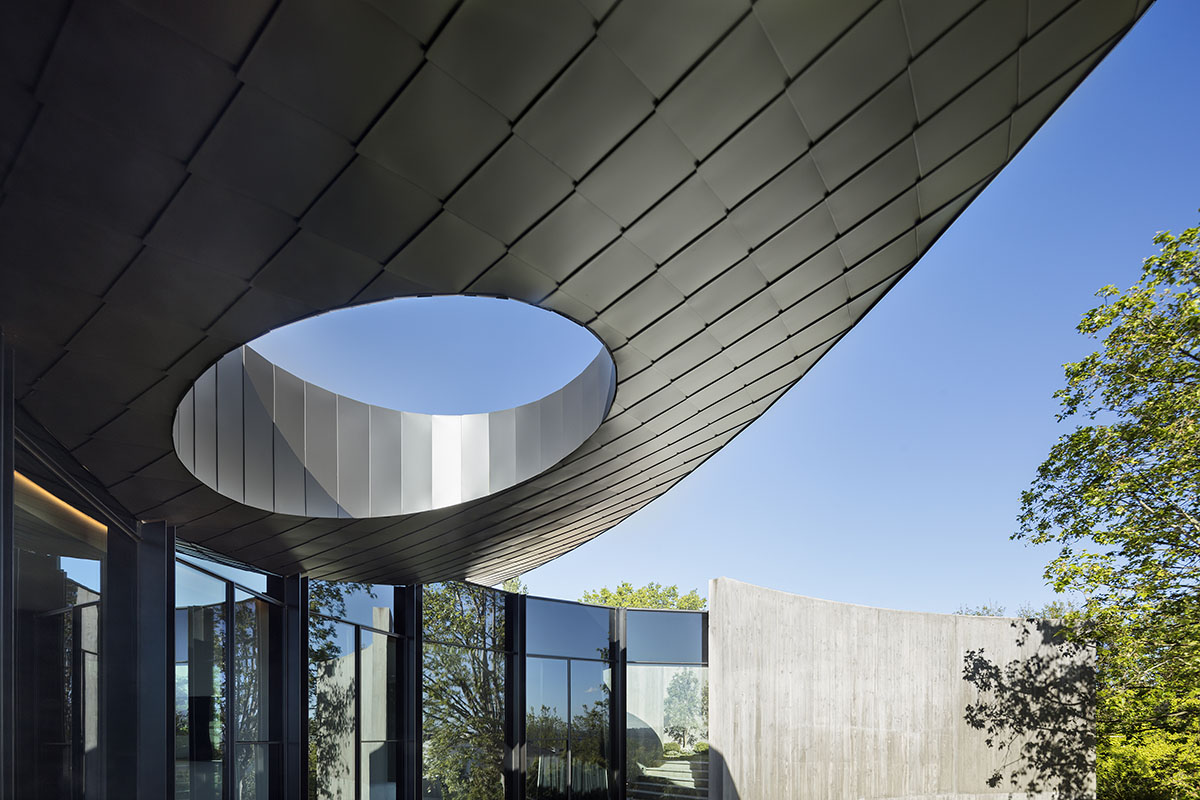
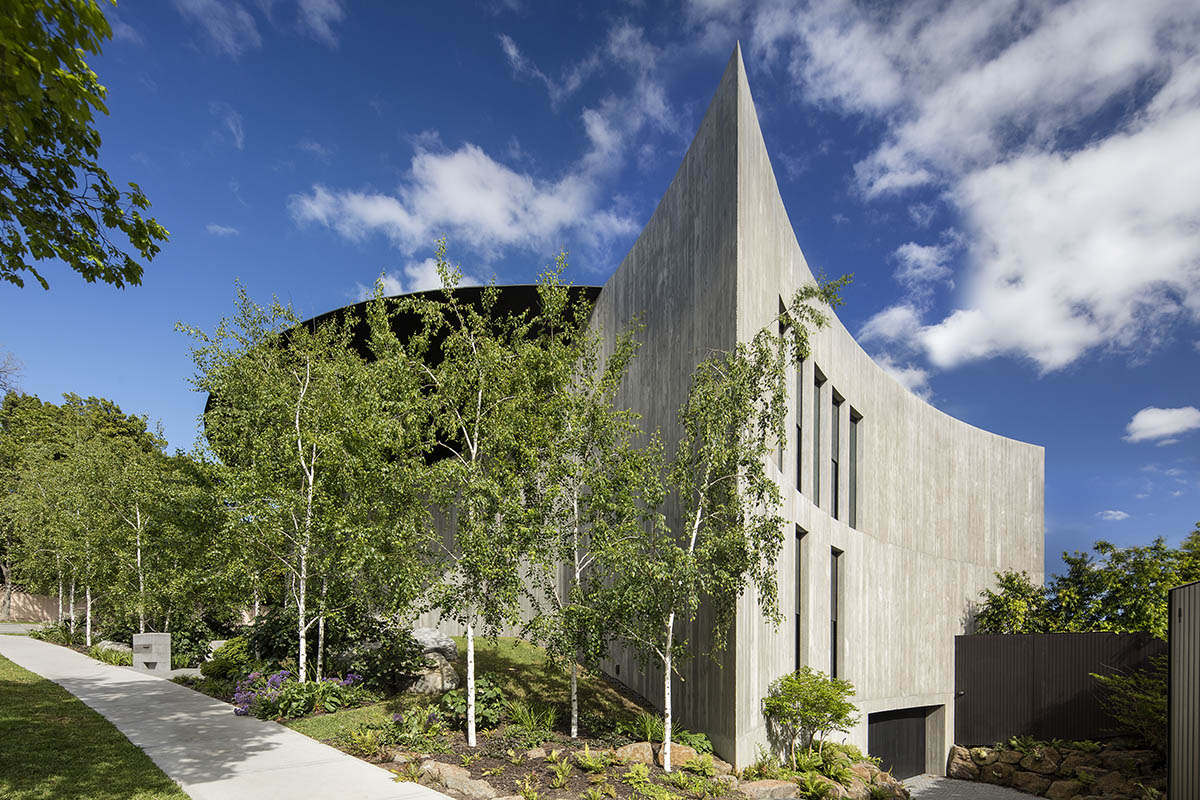

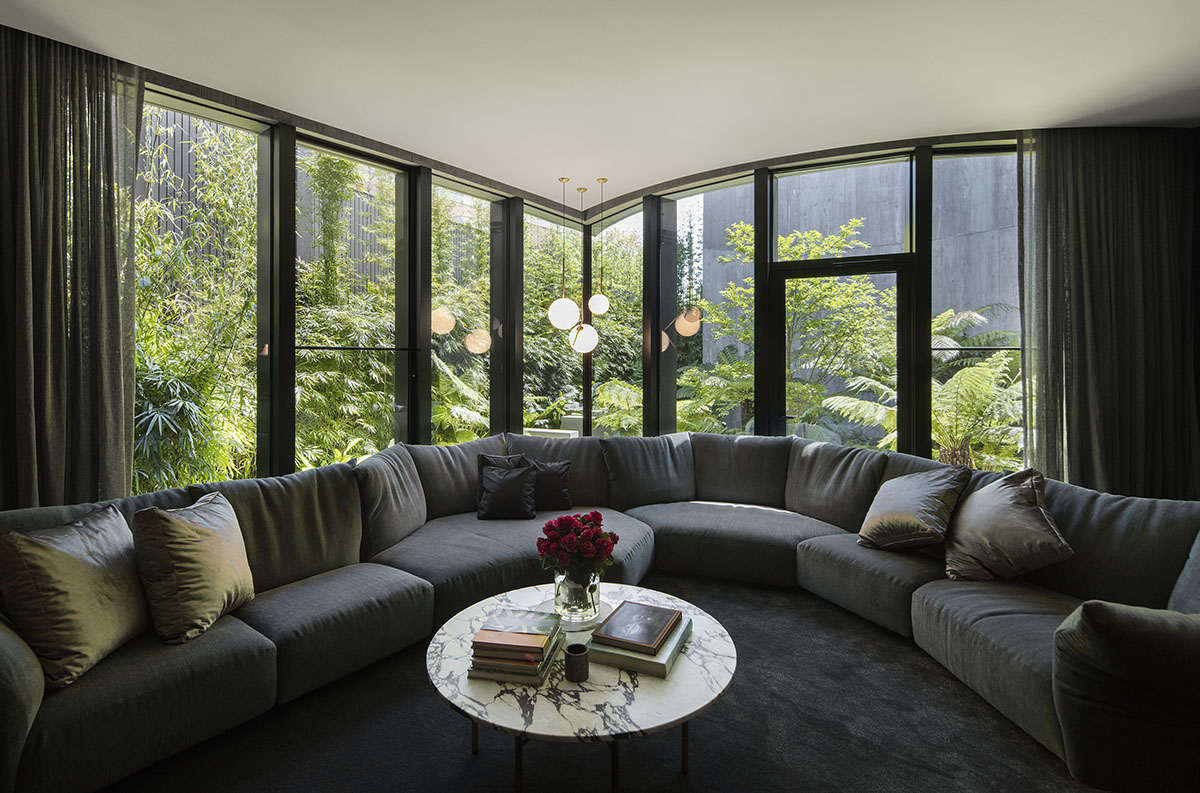
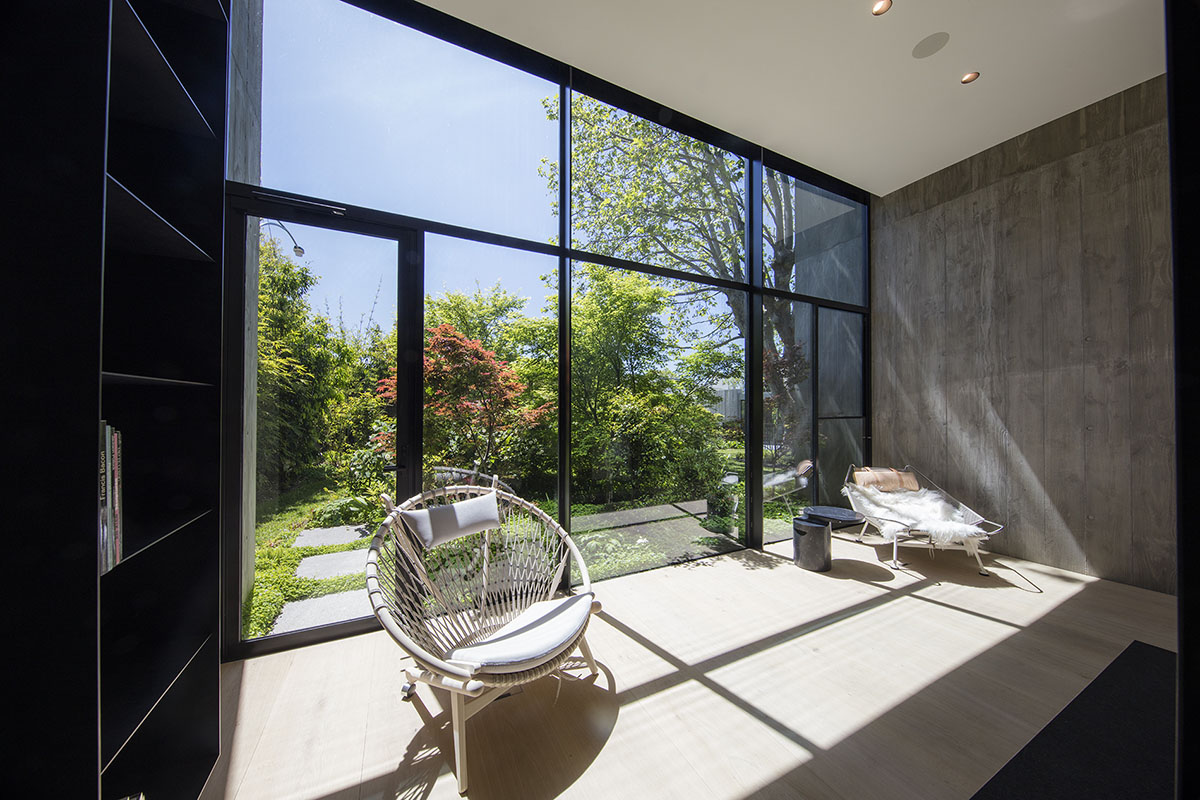


Site plan

Basement and ground floor plan
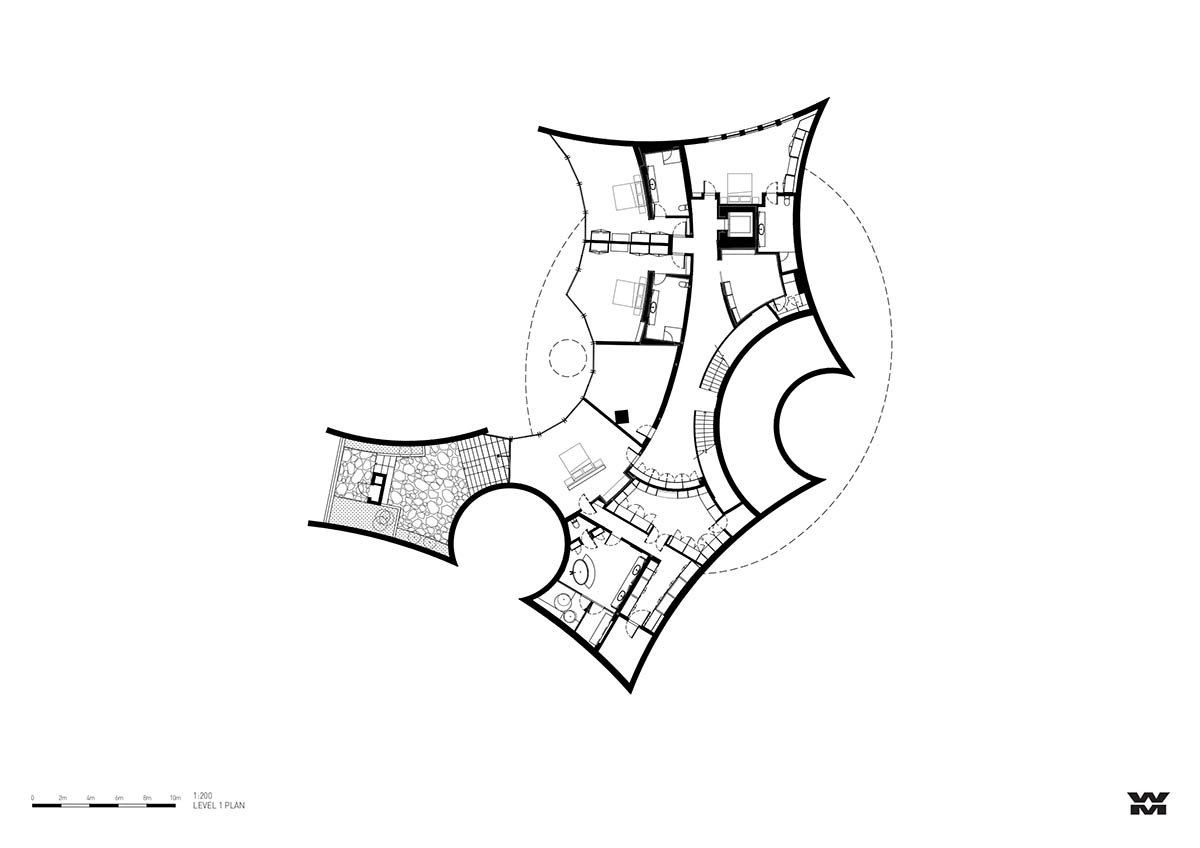
Level 1 plan
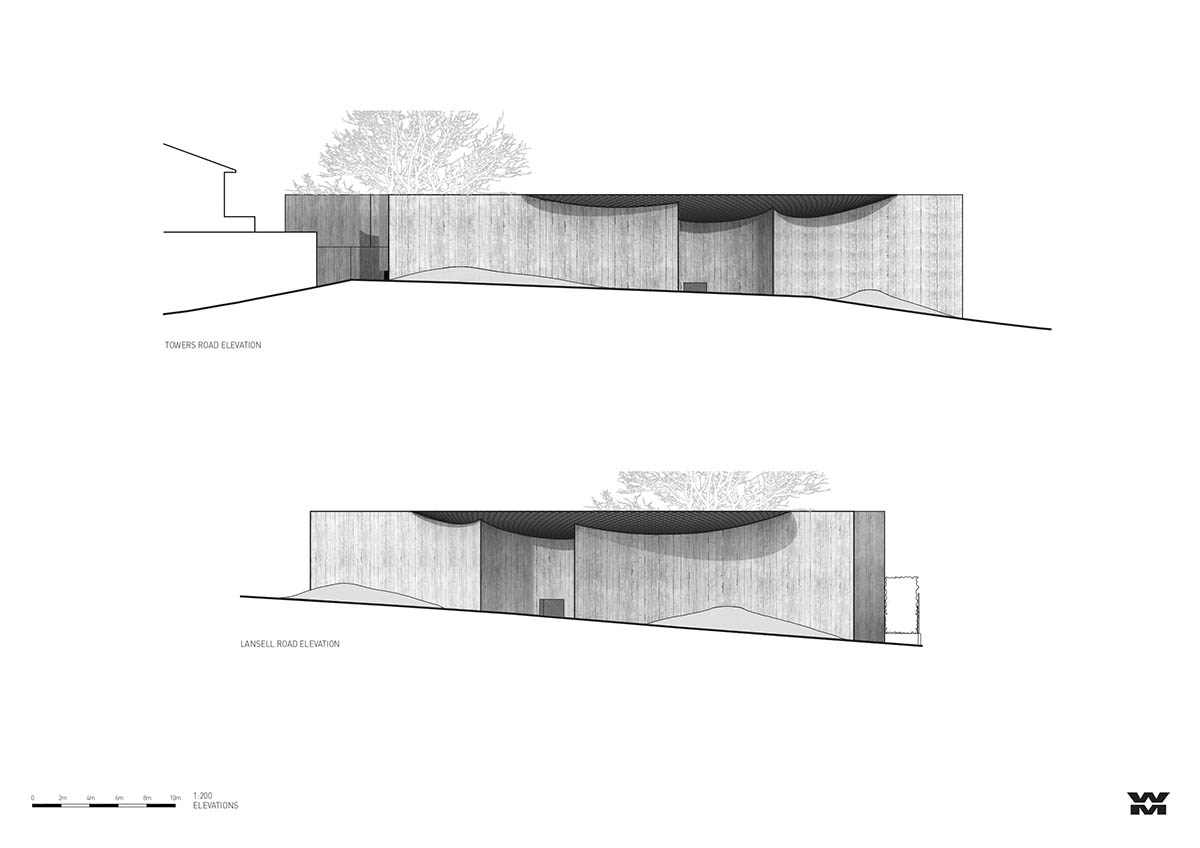
Elevations
Wood Marsh was founded by Roger Wood and Randal Marsh in 1983, and their early philosophical and aesthetic ideals have been sustained to inform their architecture throughout the ensuing decades.
The firm centred around residential architecture. Wood Marsh has office in Melbourne.
All images © John Gollings unless otherwise stated.
All drawings © Wood Marsh
> via Wood Marsh
